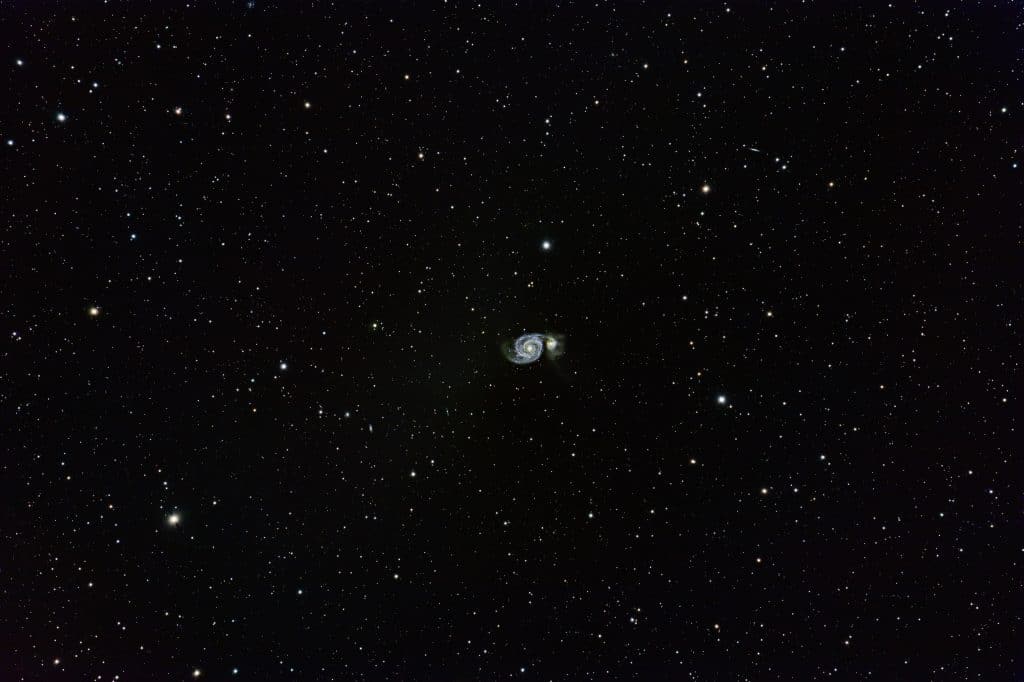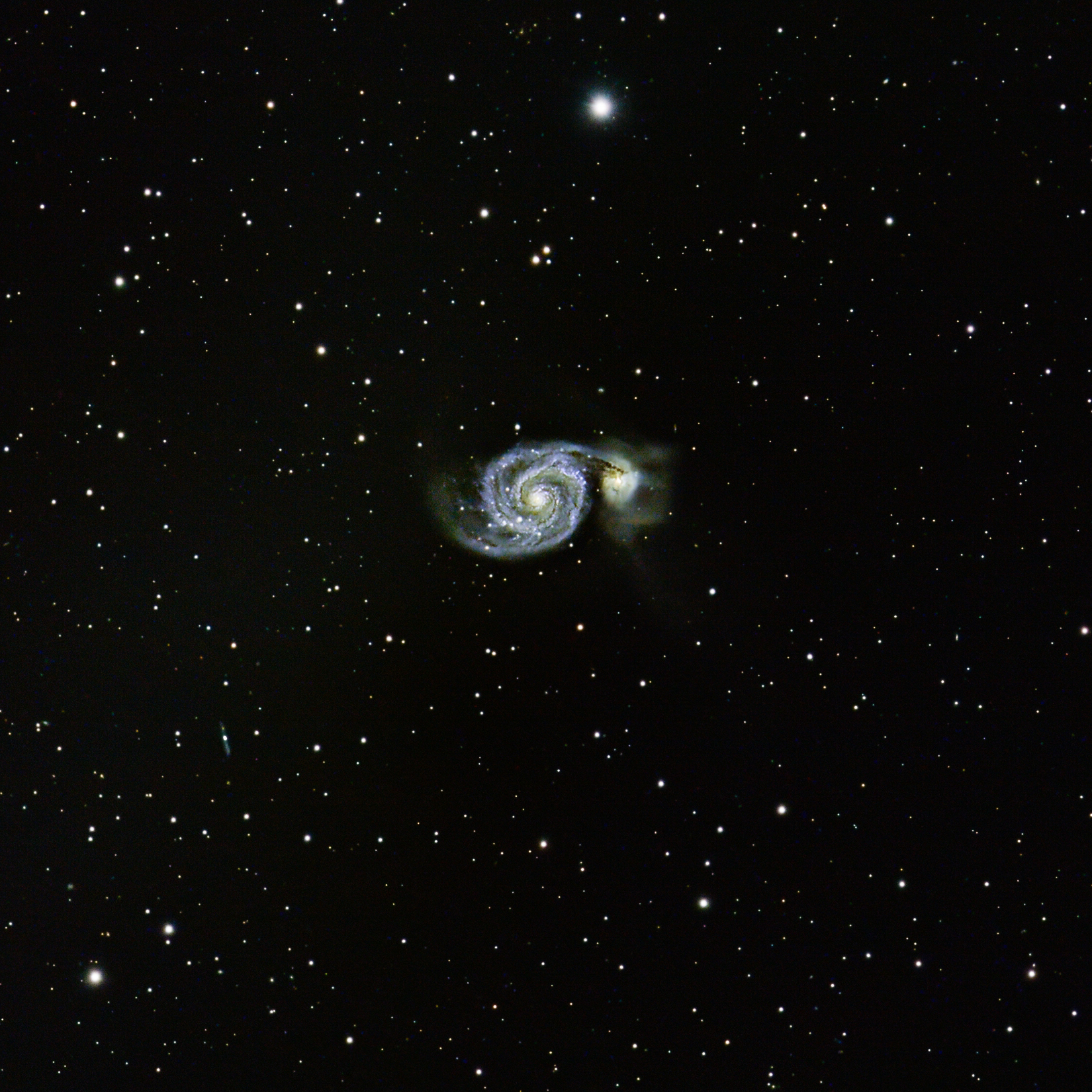Table of Contents
One of the most fascinating objects in the northern hemisphere is M51 known as the Whirlpool galaxy. This galaxy is a large spiral galaxy with two prominent spiral arms. The interesting part of this photo of the whirlpool galaxy is that we see the little companion galaxy NGC 5195 next to M51.
A galactic tango
The cosmic tango of these two galaxies is incredibly beautiful to watch. Of course, the tango is so slow that we, as humans, do not see the change in the position of the galaxies. What we can see is that M51 is a beautiful spiral galaxy which appears to have a bluish colour that indicates that a lot of starforming is taking place. While the neighbouring NGC 5195 galaxy is somewhat pulled apart, which is seen by a large amount of scattered gas. What we are witnessing is a head-on collision unfolding in extreme slow motion.

M51 is located high in the sky, making it an excellent target to photograph from Denmark. Since it is located so high up in the sky it is what astronomers call circumpolar. This means that it never sets below the horizon, hence it is a target where you can easily collect data all year around. For this image, I have only managed to obtain a limited amount of data due to clouds rolling in. The image you see here has a total integration time of 2 hours and 42 minutes. This gives a reasonable amount of data to clearly see the spiral arms of M51, and the dust of NGC 5195.
In the image above you can get an idea of the uncropped version, where the size of the Whirlpool galaxy is shown – it is by no means big. So let’s try to move in closer.
Let’s take a closer look
Below I have made a cropped version of the image. Here the extreme event the merging galaxies are clearly seen. the spiral arms of the Whirlpool galaxy are clearly seen. It is also evident that the galaxy that is being eaten NGC 5195 is being ripped apart by M51. This is seen from the massive dust cloud seen to the right of NGC 5195.

The amazing Trevor Jones from Astrobackyard.com has published an article on M51, you can read his article here
Facts about M51 – the Whirlpool galaxy
The galaxy known as Messier 51 or M51a is located in the constellation of Canes Venatici, it is estimated to be around 23 million lightyears away from Earth.
M51 is located at the coordinates
Right Ascension: 13 29 52.7
Declination: +47 11 43
You can see the galaxy in a pair of binoculars if you start at the bright star Alkaid in the constellation of Ursa Major, and the move towards the star Cor Caroli in the constellation Canes Venatici.
The galaxy M51 is a very bright object, making it a perfect deep-sky object for amateur telescopes. It is a natural target for astrophotographers during galaxy season. In Denmark, which Is quite far north, M51 is visible all year round, this is usually referred to as the object is circumpolar. To determine if an object is circumpolar, or not you must know your latitude. The latitude of my garden is 56.233333 degrees. To assess if the galaxy is circumpolar we must perform the following calculation, if the declination is larger or equal to 90 degrees minus the latitude the galaxy will not set.
\delta \geq 90^{\circ}-L
Here \delta is the declination, while L marks the latitude. In this case \delta \geq 90^{\circ} - 56.233^{\circ} = 33.767^{\circ}. This means that the galaxy will never set below the horizon, since the circumpolar happens if the declinations of an object are above 33.767^{\circ}, and M51 has a declination of \delta = +47.195^{\circ}. In other words, it will never set below the horizon here in Denmark.


Galaxy images like this one of M51 is comparable to other galaxy images on this site for example the image of M81 Bode’s galaxy

